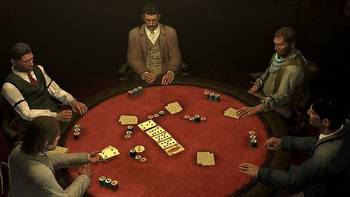Why Are Casual Games So Popular?

Over the last ten years, gaming has taken over the entertainment industry. Back in 2020, gaming figures boomed around the world. From revenue to spectatorship to total downloads, it was a golden era of gaming expansion. Just about everyone was playing a title or watching others compete.
This ushered in an era of eSports. Though eSports has been around for decades in more niche forms, such as Magic: The Gathering finals or Street Fighter championships, the late 2010s and early 2020s saw a massive proliferation of leagues and teams. After years of incremental growth, eSports infrastructure finally expanded its reach globally.
But this emphasis on competitive gaming wasn’t the be-all end-all of the industry’s growth. While eSports grew and diversified, so did the realm of casual gaming. Instead of high-production and large-scale eSports events, casual games promise something very different for players: a light and relaxing game session.
Almost five years after the eSports boom, casual games have taken over the industry. It’s estimated that there will be between one to three billion casual gamers in 2024. Though reports are inconsistent, even lower estimates hint that around one-third of the human population likes to casually game. So why, exactly, do players seem to gravitate toward casual games in such high numbers?
Tons of Range
Casual games cover a massive range of hits, meaning players can find exactly what they’re looking for. For example, even casino games like slots can be placed under the ‘casual’ category. To enjoy, players simply spin the reel to see which winning combinations, bonuses, or multipliers are hit. Some also look into RTP meaning before selecting a slot that has the right features and return-to-player rate for them.
The setup is straightforward, letting players immediately dive into the game. But slots are just the tip of the iceberg. Casual games can also cover complex topics like puzzles. For example, Empty is a new casual puzzle game where players must un-decorate a boldly designed house. The inverted rules are designed to tickle players’ brains, while the colorful visuals add a dash of excitement.
Easy to Learn
Casual games are also easy to learn. Let’s take a look back at the previous examples of slots and puzzles. To play slots, all players need to do is learn how the game’s features work, find a title with a good RTP, and then hit ‘spin’. From there, the game unfolds intuitively.
Even puzzle games include similarly basic mechanics. To start un-decorating rooms in Empty, all players have to do is click and select household items. In other words, it unlocks a more idle gaming experience that allows players to unwind after a long day—not take on yet another challenge.
Gaming on the Go
Along with straightforward mechanics and a wide range of topics, casual games are also ideal for gaming on the go. First, most titles take little time to load since they’re a bit more basic than MOBAs or FPS titles.
Second, many casual games are designed for easy pausing, letting gamers put them down and pick them back up as needed. Lastly, most casual games are released on mobile, adding an even more accessible gaming experience for those who lack other hardware.
Financial Accessibility
Compared to traditional console or PC games, casual games tend to be a lot more affordable. Though casual games might be released for console or PC, they’re often geared toward a mobile experience, as mentioned above.
Most casual game developers use a free-to-play model, meaning players can download the game for free, then pay smaller amounts to unlock in-game experiences or personalization. Though microtransactions can get pricey, they’re usually reasonable.
Social Elements
Overall, casual games offer an accessible and satisfying experience for gamers—even if they haven’t had too much experience in the industry. To add even more fun to casual games, many also include basic social features. That might simply be a leaderboard or a more expansive chat function. Regardless, social elements are often attractive for players—especially if they’re still just learning the ropes.




































